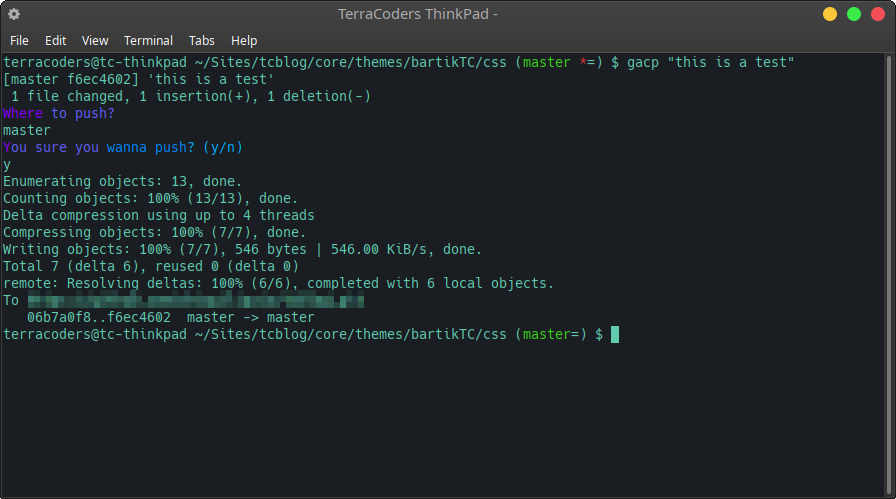

See commit 17baeaf () by Ævar Arnfjörð Bjarmason ( avar). That will allow git push to know where to push, and to which remote branch to push to.īut: " git fetch -set-upstream" ( man) did not check if there is a current branch, leading to a segfault when it is run on a detached HEAD, which has been corrected with Git 2.35 (Q1 2022). If the remote is fetched successfully, add upstream (tracking) reference, used by argument-less git pull and other commands

You also have git fetch -set-upstream and git pull -set-upstream. set-upstream is not just about git branch -u or git push -u.

Git: Difficulty Getting Existing Git Repository to Track New Bare Remote RepositoryįYI: all commands tested with git V2.32 on Windows.
#GIT PUSH COMMAND FULL#
Only if the upstream repository has been given a name using git remote add Īnd git push -set-upstream has been used with this name, the full power of remote tracking branches is available in all git commands. Git push does not create a reference to the remote branch head in. If is given as an URL or file path, see for example this example: git push -set-upstream master Why do I have to “git push -set-upstream origin ”?.That is, when these config variables are set, you can just issue git push and git will know (using these variables) the remote repository and upstream branch to use. The magic happens when these config variables are used by, e.g., git fetch, git pull or git push to figure out the upstream repository and remote branch for a local branch if you don't explicitly specify them on the commandline. This will output any variables that start with "branch." You can query whether any of these config variables are set using git config -get-regexp ^branch\. Based on the way how this upstream information is stored, a local branch can have no more than a single set of upstream information. If your local branch is called main, the respective config variables are and. Upstream information is stored under the local branch name. It stores upstream information (i.e., remote repository and branch) for the local branch in config variables. In addition to the operation that a git push without the option -set-upstream does, this option makes git push set at least two configuration variables: Finally, I assume a common git configuration. For simplifying the answer, I further specified that the local branch that you are on has the same name as the remote branch on your upstream repository that you are pushing to. Configuring build secure variable with access tokenĮncrypt access token on “Encrypt configuration data” page in AppVeyor ( Account → Encrypt YAML) and then put it as secure variable into your appveyor.As you see, I assumed that the git command in question is git push. The scope needed is public_repo for a public repository or repo for a private repository. Use this GitHub guide for creating access tokens. Can be used as credentials with Git commands ( this is what we need).Could be easily revoked from GitHub UI.Of course, you can use your GitHub username/password to authenticate, but there is a better approach - Personal Access Tokens which: Indicate git user name and mail Creating GitHub Personal Access Token.Adding access token to credential store.Configuring build secure variable with access token.We will be using GitHub as a repository provider, however described technique could be applied to any Git hosting.Īt a glance the entire process consists of these steps:
#GIT PUSH COMMAND HOW TO#
This article will demonstrate how to use Git credential store to avoid Git asking for credentials and stalling the build. The scenario with custom SSH key is described in this article ( with the only difference is that the key should be deployed under GitHub user account, not repo, to have write access). Two methods to access remote Git repository exist: SSH and credentials store. In most cases you can’t supply username/password in command line ( we are not considering the case when credentials are embedded in repo URL as this is bad). If you try using any Git command against remote repository you’ll get stuck build because Git is asking for credentials. So you may have to check out the wanted branch: git checkout masterīut the main question here is how to authenticate Git commands. Note: AppVeyor checks out only the last commit and not the entire branch.


 0 kommentar(er)
0 kommentar(er)
